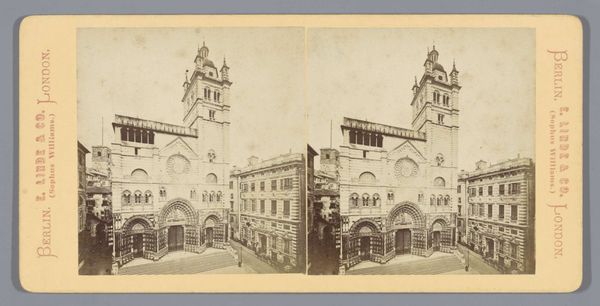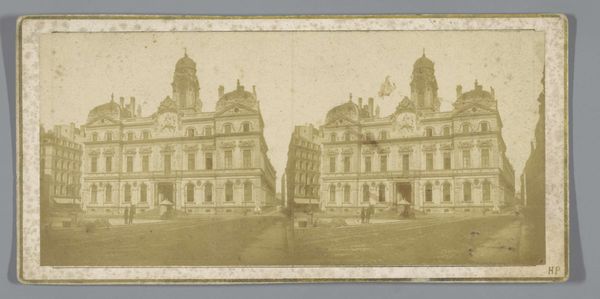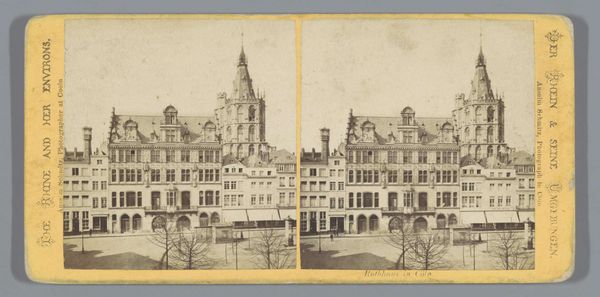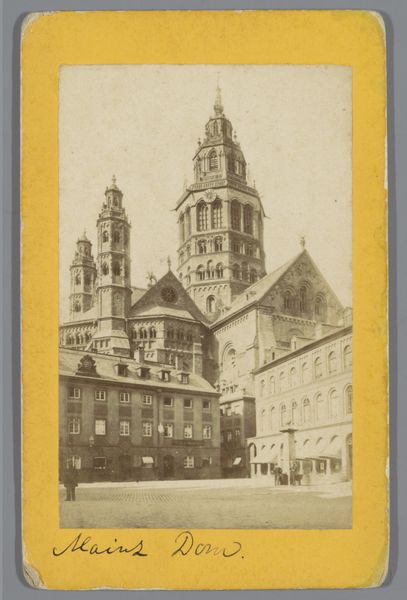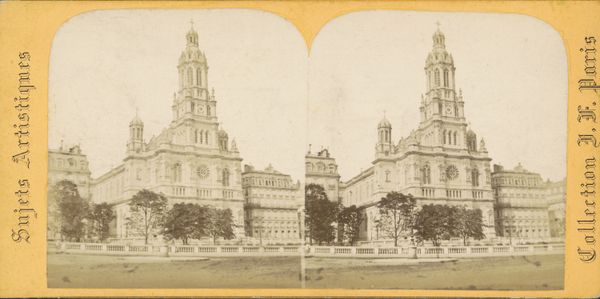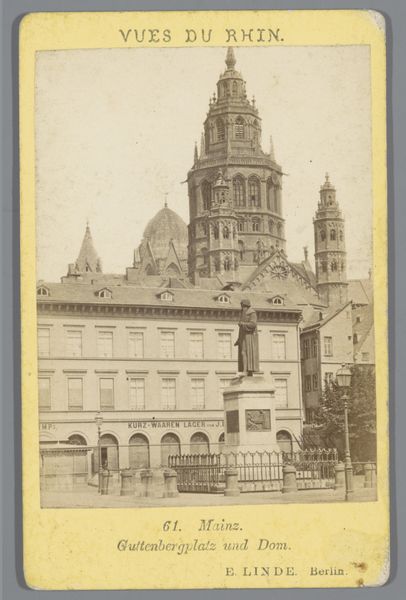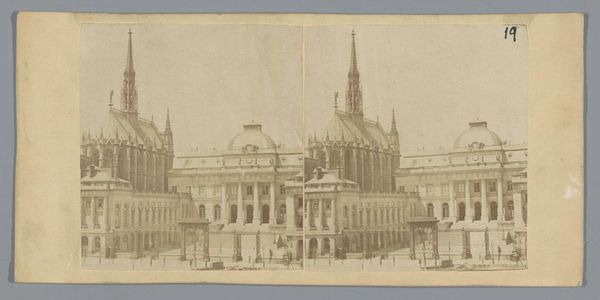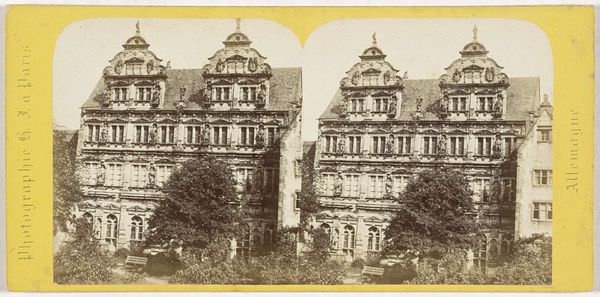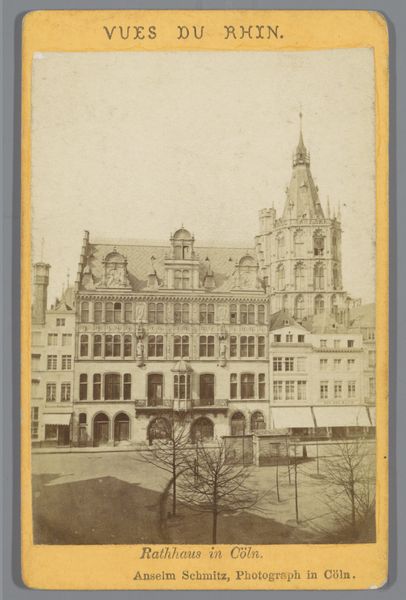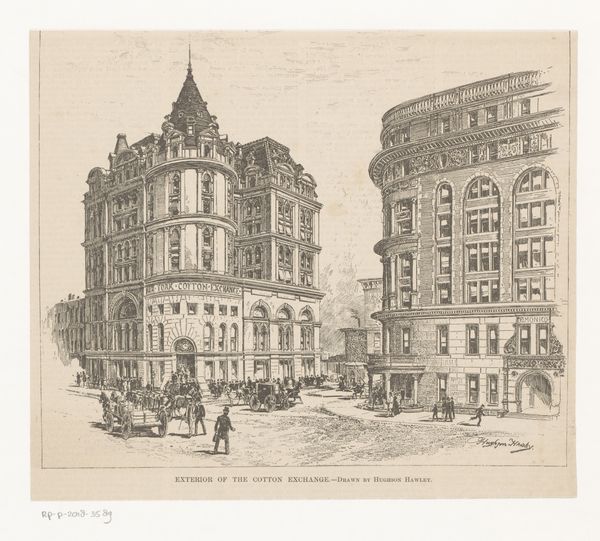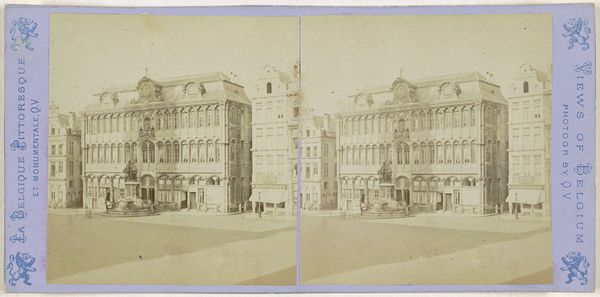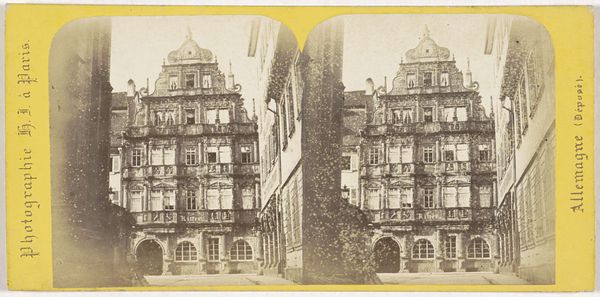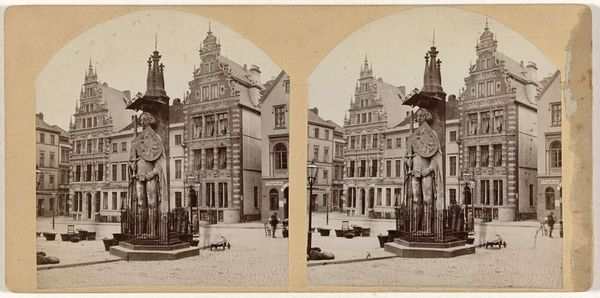
#
aged paper
#
toned paper
#
yellowing background
#
old engraving style
#
coffee painting
#
watercolour illustration
#
golden font
#
pencil art
#
watercolor
#
historical font
Dimensions: height 85 mm, width 177 mm
Copyright: Rijks Museum: Open Domain
Curator: I find myself peering into this antique stereoscopic photograph, “Toren van de Dom van Mainz, Duitsland” taken by Hippolyte Jouvin sometime between 1860 and 1865. It gives me the impression of gazing upon a distant, sun-faded memory. Editor: Yes, it evokes a sense of fading grandeur. The almost sepia tones give it that antiquated feel, while the architectural detail hints at the social structures and religious power that would have dominated Mainz at the time. Curator: What gets me is how these old photographs, they’re like holding someone else’s ghost in your hands, aren’t they? You wonder what the person taking the shot felt, what the air smelled like… it's strange, an artifact frozen in time. Did they see the present we are standing in right now? Editor: Precisely. And as an activist, it forces me to reflect on who controlled the narratives of the time and who didn't have access to such means of representation. Photography wasn't a universal tool. Jouvin, as a privileged photographer, captured a perspective that perhaps excluded the everyday lives of ordinary people dwarfed by structures like the Dom. Curator: I see that – the weight of stone against the anonymity of unseen lives. Do you feel like that missing perspective makes the photograph incomplete? Editor: Not necessarily incomplete, but definitely mediated. We need to remember the historical conditions of the photograph’s creation – the limited access, the colonial gaze potentially influencing the way the cathedral, and Germany, were presented to a French audience. Curator: Absolutely. It makes you think, doesn't it, about all the other stories unfolding beyond the frame? It reminds me to try and be a better listener, as an artist. Editor: And it urges us to question the supposed objectivity of visual representation and engage with its power structures, ultimately reminding us to always strive for more inclusive dialogues about history.
Comments
No comments
Be the first to comment and join the conversation on the ultimate creative platform.

